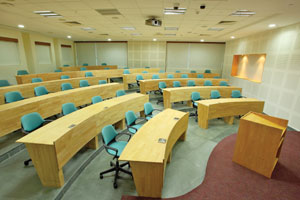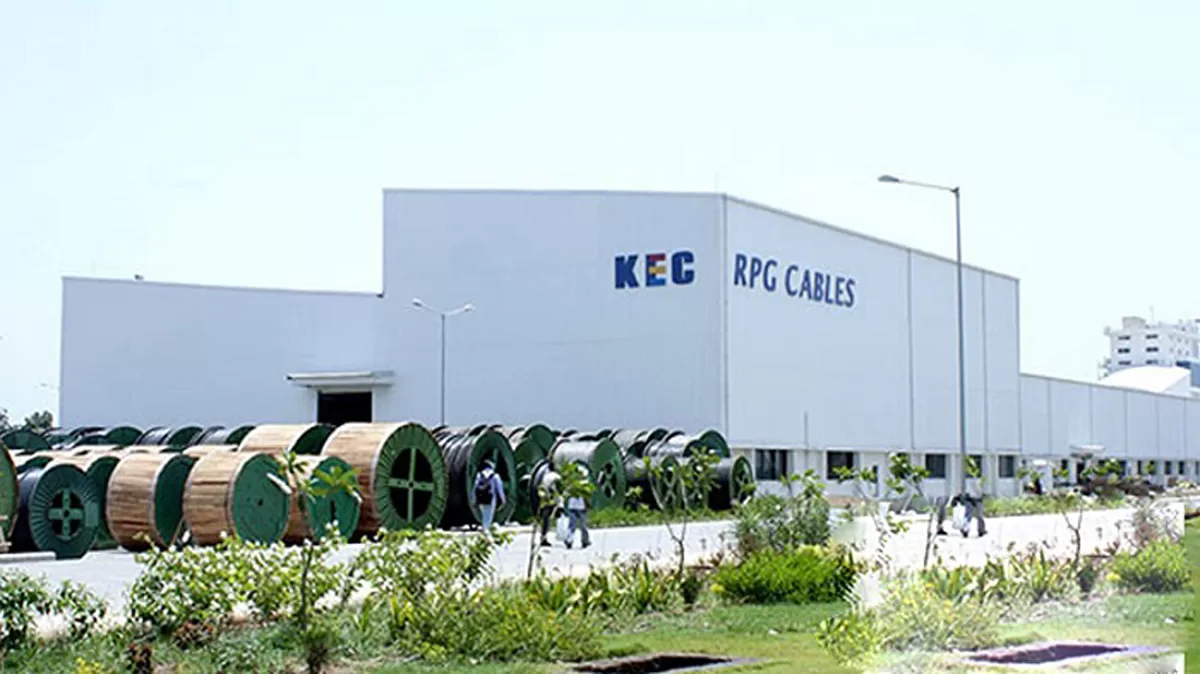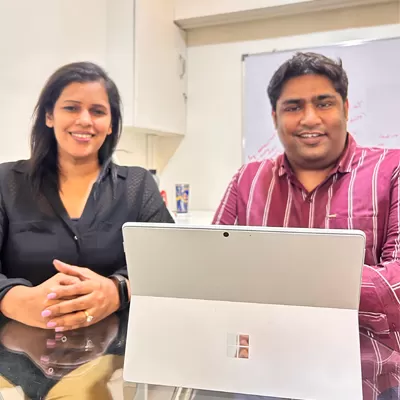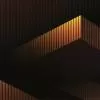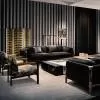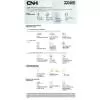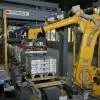One of Kerala's first educational institutes to receive IGBC's LEED Gold certification under New Construction, this institute scored maximum points in the areas of sustainable sites and indoor air quality.
Along with being one of India's top tourist destinations, Kerala also enjoys the highest literacy rate in the country. And if this wasn't enough, the state now has its first Indian Green Building Council (IGBC) LEED Gold-certified education institute: Asian School of Business (ASB). Having received the rating for New Construction, this institute has been designed by Singapore-based Architectural firm CPG Consultants, with Jones Lang LaSalle as the consultant. Biju S Nair, Project Manager, Asian School of Business, tells Shriyal Sethumadhavan more about the project's features:
To-do list
It starts from site selection and master planning to the final finish of the building. According to IGBC, a typical green building demonstrates energy and water savings, reduction in soil waste, lower greenhouse gas emission, enhanced indoor air and environment quality, and less use of virgin materials by conserving natural resources. Following these, ASB has achieved the tangible benefits of 20 per cent reduction in power consumption and around 30 per cent reduction in portable water consumption. Coming to the rating system, there are 69 possible base points with seven prerequisite conditions. ASB achieved 39 points, with maximum scores for sustainable sites and indoor air quality.
Site benefit
If adequate environment protection strategies are not employed, site clearing and earthmoving during construction can lead to significant erosion problems. This can also lead to degradation of the property and sedimentation of local water bodies; this directly affects water quality and disrupts local streams. To limit these issues to a certain level, it was important to control soil erosion and sedimentation. Hence, we adapted four main measures. First, temporary seeding has been done; here, grass is planted to stabilise soil. Second, mulching has been done, wherein the soil surface is covered by empty cement bags. Third, silt fence with posts and filter fabric media has been fitted to remove sediments from storm water. Last, a sedimentation trap has been created; small pond areas have been excavated to allow for settling of sediments from storm water. Further, to ensure limited site disturbance during earthwork and clearing of vegetation, the construction area was demarcated and protected by proper fencing. Hence, site disturbance during construction took place only in a confined area and the natural plant habitat was protected in the other part of the land.
Conserving power
To optimise the building's energy performance, we undertook energy modelling and compared the performance to ASHRAE standards. Following this, the building was oriented such that minimum heat would be transferred and there would be maximum ventilation and daylight inside. Also, its features were planned to reduce power consumption. This included the use of VRV system for air-conditioning from Daikin, double glazing units for glazing with Saint Gobain's E-series glass, use of lighting sensors, classroom scheduling using a fully Integrated Building Management System (IBMS) by CISCO's Smart and Connect Campus System and much more. Of these, the uPVC windows and double glazing units help reduce the solar heat percolating inside the building. The heat is absorbed and transmitted inside the building from a normal aluminium framed window, which is higher than uPVC windows. This helps reduce the temperature inside the building, leading to efficient working of the air-conditioning. Hence, we utilised Syntax uPVC windows. Also, the lights are supported with an automatic technology - they switch on and off sensing the presence of people. Last, the IBMS installed in the building helps to monitor and control the usage of HVAC, lighting, pumping of water, etc. For instance, as the use of classrooms and seminar halls is prescheduled, the air-conditioning and lights are switched on and off at desired times.
Saving H2O
If water available globally is a glassful, potable water available would be a spoonful. To ensure efficient use of water, we made use of low-flow water fixtures like sensor-operated water taps, flushing cisterns, etc. Also, with recycled water from the toilets and kitchen being used for landscaping, we have also implemented a vast rainwater harvesting system. This system, along with a water collection pond, has been created on the southwest corner of the plot. ASB spans over 16 acre and the site slopes towards the southwest corner. Hence, we made a cut-off wall using HDPE sheets to arrest the flow of subsurface (underground water flow) and surface water through this valley. This helps retain more water in the upstream side that leads to the rise of the water table in the local area. Hence, the water level in the open wells in the nearby area rises; we have been able to collect the entire surface and subsurface rainwater in the campus.
Improving air quality
CO2 sensors help increase the effectiveness of the ventilation system. Additional outdoor air ventilation, by treating fresh air, has been used to ensure improved air quality within the building. Further, the VRV (variable refrigerant volume) air-conditioning system provides precise capacity control with an inverter-driven compressor and individual Electronic Expansion Valves (EEVs) for each indoor unit. While a conventional system air-conditions a building as a whole, the VRV system air-conditions each room individually. This is more economical and efficient. Also, older refrigeration equipment used CFC (Chloro Fluoro Carbons). The reaction between CFC and an ozone molecule in the earth's stratosphere depletes the ozone layer. Hence, we made use of a non-CFC refrigerant R410A for our HVAC system.
Materials matter
Heat absorbed by surfaces like concrete and bitumen gets radiated over a period causing thermal gradient difference. Hence, natural rock and cobblestones have been used on the pavement instead of bitumen as this helps reduce this heat island effect. Similarly, the entire building facade has been clad with Jodhpur/Dholpur stone, which is naturally available sandstone. Similarly, the SRI tiles used for over deck insulation on the terrace are coated with paint with a high solar reflective value. Hence, less heat is transferred into the building. Also, nitrile rubber has been utilised for insulation under the roof as this helps reduce the heat coming in from the terrace. Apart from these, regionally available materials have been used. We have also encouraged the use of materials with high recycled content in cement, steel, glass, concrete, etc. Low VOC paints, sealants, adhesives, etc, which help reduce the quantity of indoor air contaminants, have been utlised. And last, to reduce thermal heat gain, we have extensively used high-performance glass with double glazing units. SGG ET 425 Green Aura by Saint Gobain has been used. We have opted for a DGU, which gives us a U value of 1.92W/sq m with a solar factor of O.17. These parameters reflect the amount of radiation that a glass transmits inside the building.
No waste
Solid waste generated during construction was diverted effectively for reuse and recycling. Recycled content in building products contain feedstock materials recovered from consumers or industrial waste streams. These benefit the environment as they reduce virgin material use and solid waste volume. Construction waste like scrap steel, brickbat, concrete debris, etc, were collected manually on a daily basis and segregated into different barrels; this was the brief given to the recycling vendor. Recycling of construction and demolition debris reduces demand for virgin resources, which in turn reduces the environmental impact associated with resource extraction, processing and transportation.
Preserving green
ASB also has to its credit a number of intangible benefits like a green corporate image, health and safety of occupants, and enhanced occupant comfort and productivity. Again, we imbibe best operating practices and latest technologies. Smoking is strongly prohibited inside the campus. Also, in landscaping, we have chosen low water consuming and local plants like cassia fistula (yellow shower) and areca catechu (betel nut). To ensure the institute's green features are maintained, we have developed a strong facilities management unit to check and ensure energy monitoring and control of the system. Also, awareness programmes are conducted regularly for the faculty, students and administrative staff.
Project details:
Size: 1.07 lakh sq ft
Cost: Rs 45 crore
Payback period: Three to five years
Contractors: Asian School of Business.
Tel: 0471-6579 001. E-mail: info@asbindia.in Website: www.asbindia.in; Vettoor Construction Engineers. Tel: 0481-256 2332. Fax: 0481-2564 332. E-mail: vettoor@vettoor.in Website: www.vettoorcenter.com
Architect/planner: CPG India. Mayur. Mob: (0) 98450 29045; Jones Lang LaSalle. Jipu. Mob: (0) 98840 32233.
Landscape architect: Jacob Klavara Levi. Jacob. Mob: (0) 99470 45683.
Green consultant: Jones Lang Laslle. Ramaiah Kumar. Mob: (0) 98445 02138.
Structural consultant: Valsraj & Damodar. Kochi. Tel: 0484-231 5562.
Services consultant: Entask. Bengaluru. Tel: 080-4011 3200. E-mail: entaskblr@entask.co.in Website: www.entask.co.in
Civil finish: Indtech Interiors. Kochi. Tel: 0484-401 6111. Fax: 0484-409 9928. E-mail: indtechpvtltd@gmail.com Website: www.indtechinteriors.com
Elevators and escalators: Kone elevator. Tel: 044-2653 3901. Fax: 044-2653 3912. Website: www.kone.com
HVAC contractor: Daikin. Tel: 0124-455 5444. Fax: 0124-455 5333. Website: www. daikinindia.com; BS Engineering. Trivandrum. Tel: 0471-329 0487.
Lights: Philips. Website: www.india. philips.com
Electrical and fire-detection systems: Cynosure. Tel: 0471-2729 381. Glazing: Gefab. Trivandrum. Tel: 0471-250 1581.
Paints: Jotun. Tel: 022-2684 8932. Website: www.jotun.com; Asian. Tel: 022-3981 8000. Fax: 022-3981 8888. Website: www.asianpaints.com
Cement: India Cements. Tel: 044-2852 1526. Website: www.indiacements.co.in
